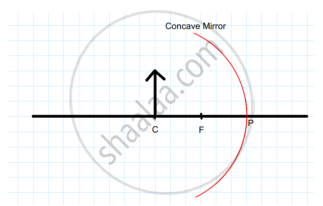Advertisements
Advertisements
प्रश्न
Why does a beam of light when it enters glass at an angle? Why does it not bend if it inters the glass at right angles?
उत्तर
When a beam of light enters glass at an angle, the speed changes and therefore the direction of light changes; i.e., bending of light occurs.
When a beam of light falls at right angles to the surface of glass, all parts of light waves reach the glass at the same time, enter the glass at the same time and hence slow down at the same time. Due to this no change in direction of light takes place; i.e., bending of light does not take place.
APPEARS IN
संबंधित प्रश्न
A student wants to project the image of a candle flame on the walls of the school laboratory by using a mirror.
(a) Which type of mirror should he use and why?
(b) At what distance, in terms of focal length 'f' of the mirror, should he place the candle flame to get the magnified image on the wall?
(c) Draw a ray diagram to show the formation of the image in this case.
(d) Can he use this mirror to project a diminished image of the candle flame on the same wall? State 'how' if your answer is 'yes' and 'why not' if your answer is 'no.'
Fill in the following blank with suitable word:
A concave mirror .......... rays of light whereas convex mirror ............ rays
The real image formed by a concave mirror is larger than the object when object is:
(a) at a distance equal to radius of curvature
(b) at a distance less than the focal length
(c) between focus and centre of curvature
(d) at a distance greater than radius of curvature
An object is placed at a distance of 10 cm from a concave mirror of focal length 20 cm.
An object is placed at a distance of 10 cm from a concave mirror of focal length 20 cm.
Calculate the image distance.
A man holds a spherical shaving mirror of radius of curvature 60 cm, and focal length 30 cm, at a distance of 15 cm, from his nose. Find the position of image, and calculate the magnification.
Which of the following can make a parallel beam of light from a bulb falls on it?
(a) concave mirror as well as concave lens
(b) convex mirror as well as concave lens
(c) concave mirror as well as convex lens
(d) concave mirror as well as convex lens
Concave mirrors are used by dentists to examine teeth. Why?

Examine the above figure and state which of the following option is correct? [one small box in the figure is equal to 1 cm]
The focal length of a concave mirror is 5cm. Its radius of curvature is ______.
